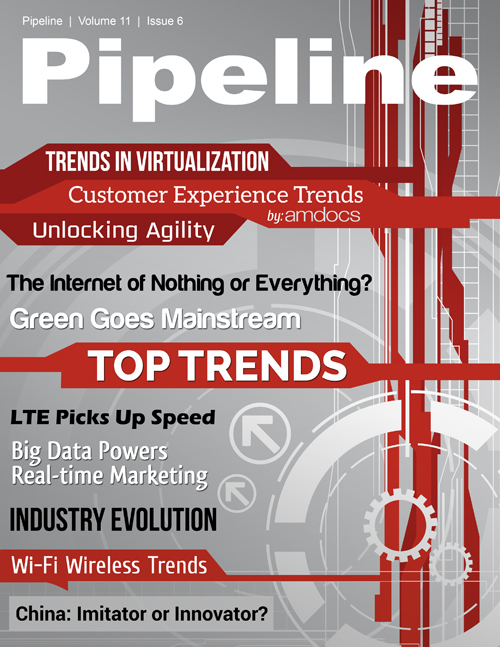The Evolution of the Integrated Communications & Entertainment Technology Marketplace
The end of XSS?
The industry has responded with a variety of solutions and systems that look a lot less like traditional OSS or BSS solutions. Although convergence has been a popular topic, what’s developing is much grander, specifically “getting rid of the hundreds of legacy systems and siloed OSS stacks and replacing them with a single, centralized architecture,” says Phil Bull, OSS solutions marketing manager for Amdocs. “It’s quite clear that the old model doesn’t work anymore. You’ve got to have an integrated OSS and BSS because processes are much more end to end, with a lot of shared infrastructure. The entities of IT and infrastructure have to come together. The processes are running across both IT and operations—you can’t separate them.”
Vendors such as Ericsson, NetCracker, Amdocs, Oracle, and SAP are slowly moving toward the use of terms like TOMS, short for “telecom operations management system". Gartner already aggregates OSS, BSS and service delivery platform (SDP) products under the TOMS heading when rating vendor solutions. In fact, Bull believes that “it’s likely we will have moved away from the terms OSS and BSS in less than ten years". Meanwhile, industry giant Ericsson has coined the term "ICT" or Integrated Communication Technology and Microsoft has been promoting "Communications and Media" solutions for some time. But whatever you call it, integrated Communications and Entertainment Technology looks like it is here to stay.
In place of these aging systems will be common information and management platforms that are highly scalable and rapidly configurable. Amdocs began its transition two years ago by incorporating its configuration management database (CMDB), historically an IT resource, as an extension of network inventory. In this way “the CMDB manages the configuration of both IT and network resources for next generation network environments in a single database to ITIL standards", the company stated in a 2010 press release. NetCracker is pursuing a similar strategy, stating that its IT Platforms suite “enables CSPs to seamlessly decouple diverse applications from their siloed environments without extensive reconfigurations.”
Evolution makes cents
Leaving behind the disparate operations and billing management systems of the past and embracing the COMET revolution affords CSPs “an operational efficiency advantage, reduces costs and streamlines their processes around IT and operations,” says Phil Bull.
In addition, integrated Communications and Entertainment technology creates new revenue streams and business models by facilitating the exposure of network assets to third parties and developer partners. It’s what Aepona’s chief marketing officer, Michael Crossey, calls network as a service (NaaS). “It’s mobile cloud services enablement,” he says, explaining that CSPs must move their competency beyond communications to include the agile delivery and management of commerce, content and control. “Core services used to be [built] around voice and network; OSS and BSS were built around a framework to support the old. All of the new things are more IP based.”
The concept of leveraging and monetizing core assets such as device, network, location, and profile data is central to communications technology. And who better to sit at the center of the new digital economy than service providers, the custodians of the customer relationship? No one else is positioned to ensure quality of service (QoS) for streaming video, for example, or deliver relevant services based on user profile. On the flip side, when customers experience problems with streaming video or a VoIP call gone bad, they call their service provider for support, not Netflix or Skype. Shifting from OSS/BSS to integrated Communication and Entertainment Technology allows CSPs to create innovative offerings like dynamic turbo-boost broadband as well as offerings that match the service and support needs of their respective customer bases.
The exposure of network assets also empowers innovation, but in order for developers and innovators to do what they do best, they’ll need more than just raw connectivity. “Providers need to provide access to more than just the network,” says Verizon’s Praveen Atreya, “and open up the expertise to let [innovative] products on-ramp more quickly.”



















